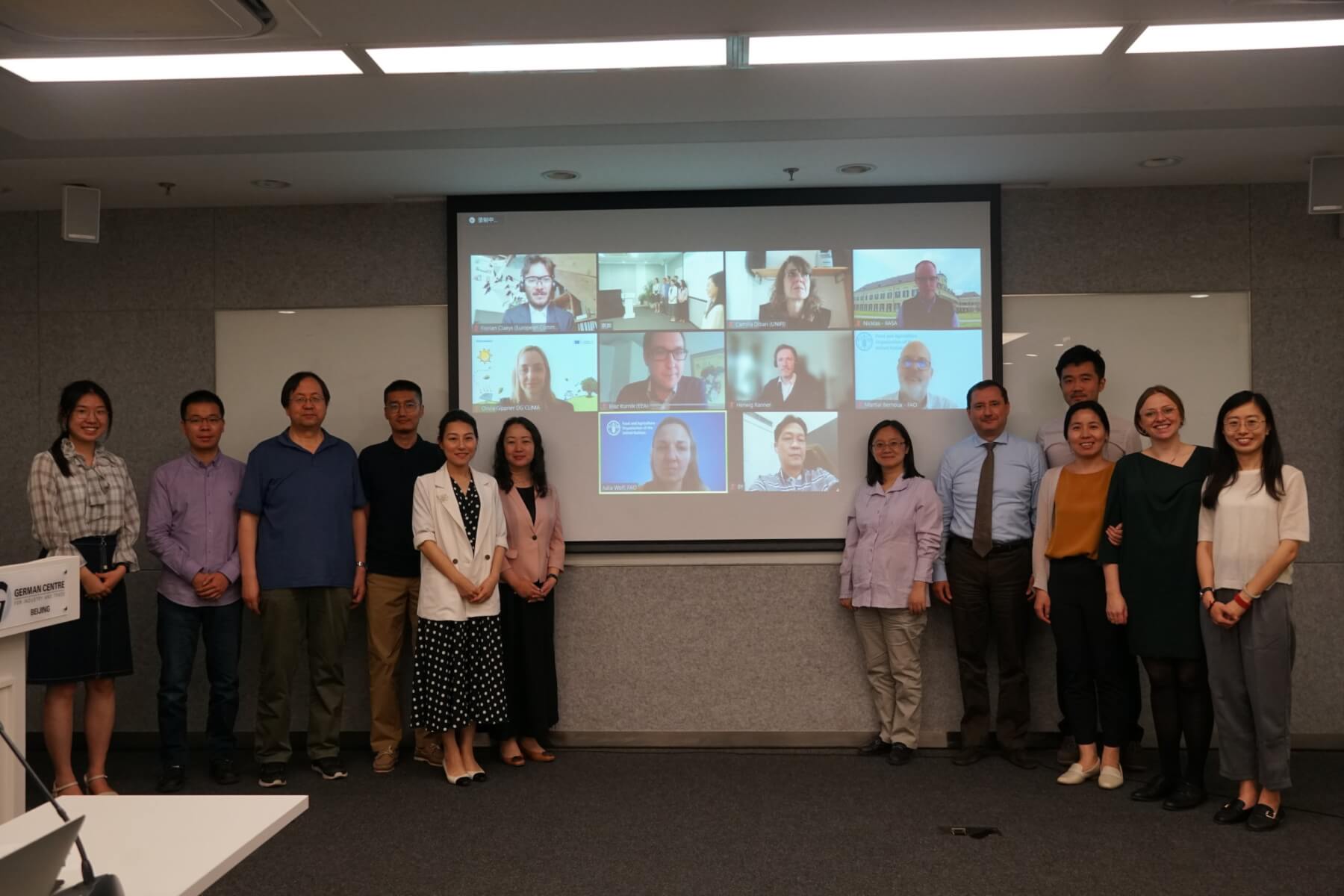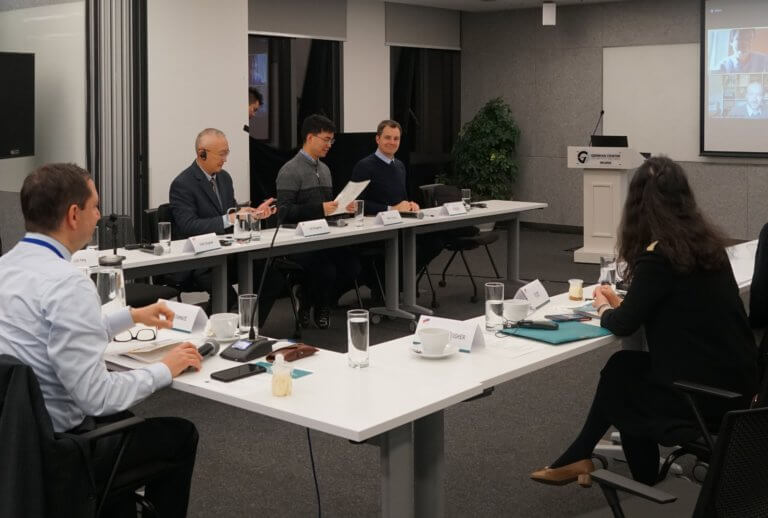
On May 26, 2021, the GIZ project Strategic Partnerships for the Implementation of the Paris Agreement (SPIPA) launched a new round of China-EU Expert Dialogues. Under the headline “Joint Monitoring and Modelling between Biodiversity Conservation and Climate Action” the first event of this series focused on “Synergies between Climate and Biodiversity and Major Challenges in the Agriculture Sector”. The experts from distinguished Chinese and European research institutions such as the Chinese Academy of Agricultural Sciences (CAAS), the Joint European Research Centre (JRC) or the European Environmental Agency (EEA) discussed during the hybrid event how mitigation and adaptation interact with biodiversity and food production. A diverse range of research was presented, including localised field studies as well as macro-modelling results. Experts on both sides emphasised the importance of these dialogue formats for mutual learning and knowledge exchange as well as for developing a common understanding and agenda that can be introduced into international climate and biodiversity processes.
The event was opened by Mr. Octavian STAMATE, Counsellor for Climate Action and Energy of the EU Delegation to China. Mr. STAMATE highlighted that both the EU and China were currently experiencing significant momentum for climate action given their respective recently increased climate ambitions. These dialogue formats would be a good way to keep this momentum and to develop the in-depth and high-quality scientific analyses necessary for supporting the complex climate policy decision-making. His words were complemented by Mr. GAO Qingzhu, Deputy of the Institute of Environment and Sustainable Development in Agriculture (CAAS), who emphasised the importance of agriculture and the corresponding challenges in mitigating emissions from the sector. Thus, he stated, China could benefit from the experience the EU, as a first mover in this area, had already gained.

The first part of the dialogue focused on the interaction of mitigation measures with food production and security. Mr. WANG Bin from CAAS provided the first input by presenting findings from research on how to produce more grain yield with less greenhouse gas emissions in rice paddies. The results from two field experiments on the impacts of warming and CO2 enrichment as well as management practices on productivity and emissions showed that integrated practices and solutions are necessary to decrease emissions and increase yields. These findings were complemented by a study on the impacts of climate change on the germ plasm diversity and adaptation in China presented by Mr. WU Jianguo from the Chinese Research Academy of Environmental Sciences. Mr. WU showed that climate change has already resulted in changes in species richness across China with a general trend towards increased plant richness in north-eastern China and a decline in the south and south-west of the country. For both, plant and animal species, many options exist to preserve their diversity, for example rewilding and the restoration of populations but also altered agricultural practices and strengthened monitoring.
From the European side Mr. Pierre-Marie AUBERT, Coordinator of the European Agriculture Initiative of the Institute for Sustainable Development and International Relations, presented the first results of the future study “Ten Years for agroecology”. He pointed out the steps necessary to and the corresponding benefits of making agroecology a credible option for European agriculture. Mr. Ignacio PEREZ-DOMINGUEZ, JRC, picked up on the notion that within agriculture multiple partly competing objectives need to be considered. Using marginal abatement cost curves, he showed that all mitigation technologies in the sector come at a cost and especially the more stringent ones will impact food security. However, more flexible trade policies and specific national contingency plans for key food commodities can ameliorate this challenge.
The second half of the dialogue focused on best practices in adaptation and its influence on biodiversity conservation. Mr. Blaž KURNIK, head of the Climate Change Adaptation and LULUCF group of the EEA, initiated this session with a clear argument for adaptation in agriculture being indispensable no matter the mitigation efforts. He also underlined that the right investments in time and money need to be made today to not only reduce the impacts of climate threats but also to sustain resilient production, conserve soil and water resources, reduce waste and emissions, increase CO2 sinks and safeguard the economic viability and quality of rural life. Ms. LIU Shuo from CAAS echoed the call for urgent adaptation action but highlighted that currently evaluation methods regarding the actual effectiveness of adaptation policies are lacking. She thus called for an increased emphasis on monitoring and evaluation of implemented policies to ensure food security, adaptation and emission reduction in the most effective way.

The third presentation, given by Mr. GANZHU Zhabu, CAAS, presented the findings of an extensive field study on the response and adaptation of Tibetan alpine grassland ecosystems to climate change. Through various experiments the researchers were able to distil a comprehensive understanding of how climate change will impact this ecosystem and derive optimal management options to enhance grassland restoration. Complementing this study with finding from the European Alps, Ms. Camilla DIBARI, researcher at the University of Florence, shared insights from the LIFE PASTORALP project that aims to reduce the vulnerability and increase the resilience of alpine pasture agriculture. Similar to the Chinese study this research project uses field experiments and modelling results to derive adaptation options and instigate policy change.
Overall, the event fulfilled its purpose of sharing knowledge and creating a basis for further cooperation, both bilaterally and within the international climate and biodiversity frameworks. The event ended with a call from Mr. Herwig RANNER from the European Commission for cooperation in creating a common understanding and concrete way forward, an endeavour to which Mr. Marcel BERNOT pledged support from the FAO as well.
The event was the first in a new series of China-EU dialogues organised by SPIPA with further events planned for the second half of 2021.



